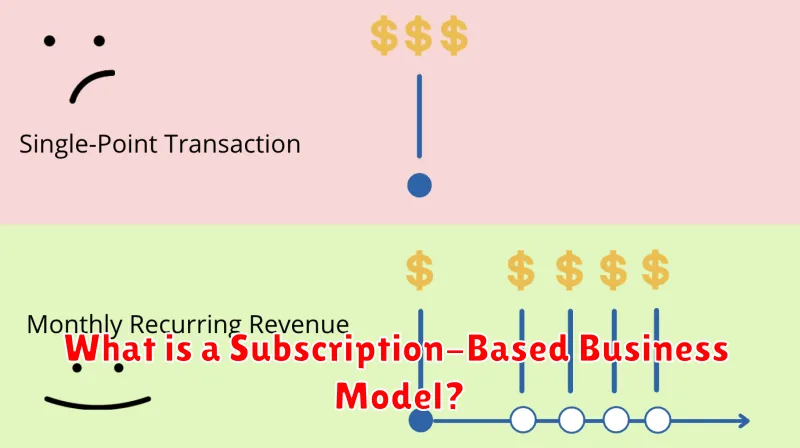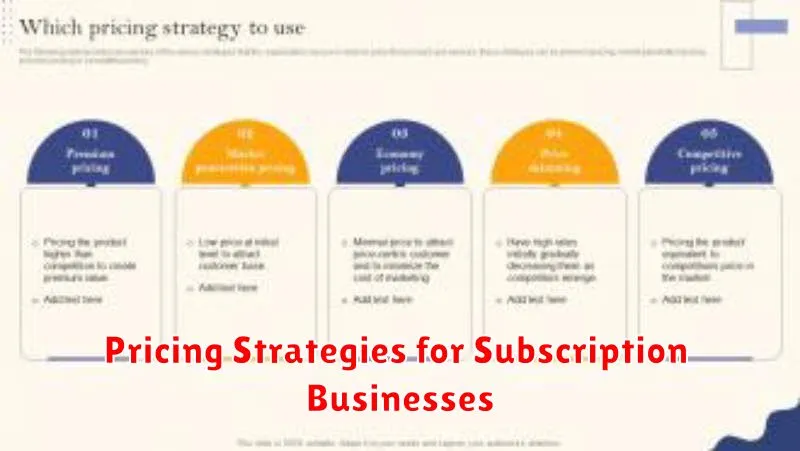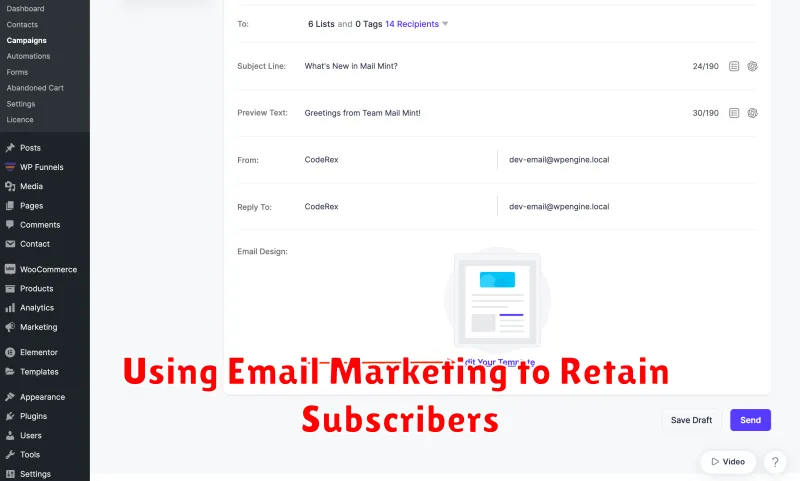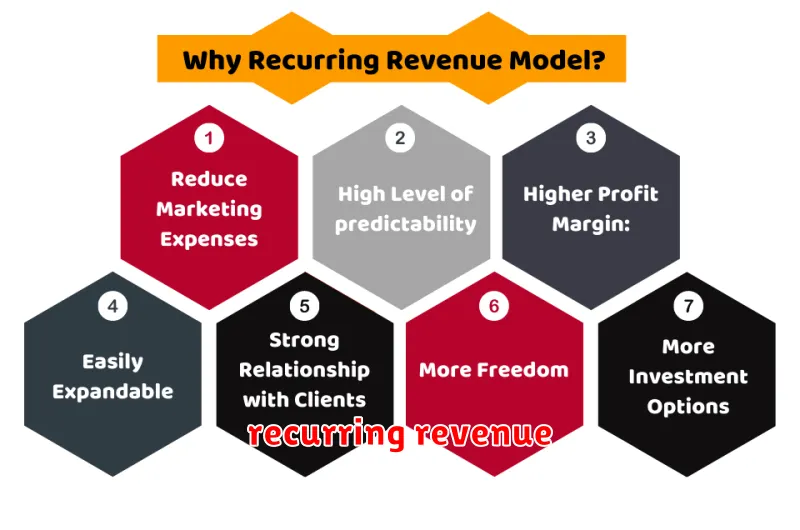Are you looking to build a more predictable and sustainable business? A subscription-based business model offers a powerful pathway to achieving recurring revenue. This article explores the strategies and considerations necessary for successfully implementing a subscription model, covering everything from identifying your ideal customer and crafting a compelling value proposition to managing customer churn and scaling your operations for long-term growth. Learn how to harness the power of subscriptions to create a robust, resilient, and ultimately more profitable enterprise.
What is a Subscription-Based Business Model?

A subscription-based business model, also known as a recurring revenue model, is a business strategy where customers pay a recurring fee for access to a product or service. This fee can be charged on a monthly, annual, or other regular basis. Instead of a one-time purchase, customers commit to ongoing payments in exchange for continuous value.
Key characteristics of this model include predictable revenue streams, strong customer relationships built on ongoing engagement, and the potential for higher customer lifetime value. This contrasts with traditional models where revenue is generated through individual sales.
Examples of subscription models are varied and span numerous industries. They range from Software as a Service (SaaS) applications to streaming services, meal kits, and even fitness classes. The common thread is the provision of ongoing access for a recurring fee.
Successful implementation relies on delivering consistent value and building a strong customer experience that justifies the ongoing subscription. This often involves features like personalized content, ongoing support, and community engagement.
Types of Subscription Services That Work Best
Several subscription models excel at generating recurring revenue. Access-based subscriptions offer tiered access to content or features, appealing to a broad customer base with varying needs and budgets. This model allows for easy scaling and upselling.
Curated subscriptions provide regular deliveries of products or services tailored to individual preferences. This model builds loyalty through personalization and fosters a sense of community. Think monthly beauty boxes or artisanal coffee deliveries.
Membership subscriptions grant access to exclusive communities, events, or benefits. This model thrives on building strong member relationships and leveraging the network effect. Gyms, professional organizations, and online learning platforms utilize this approach successfully.
Rental subscriptions provide temporary access to goods, reducing upfront costs and fostering convenience. This is especially effective for high-ticket items or those with fluctuating demand, such as tools, equipment, or clothing.
The optimal subscription model depends heavily on your target audience, your product or service offering, and your overall business strategy. Careful consideration of these factors is crucial for building a sustainable and profitable recurring revenue stream.
How to Set Up a Recurring Revenue Model
Establishing a recurring revenue model requires a strategic approach focusing on delivering consistent value to your customers. Begin by clearly defining your subscription tiers, outlining the features and benefits included in each. Consider offering various price points to cater to different customer needs and budgets. This tiered approach ensures scalability and allows for upselling and cross-selling opportunities.
Next, choose a reliable billing and payment system. This system should seamlessly handle recurring charges, manage customer subscriptions, and provide robust reporting capabilities. Integrate this system with your customer relationship management (CRM) software for streamlined customer data management. Ensure compliance with all relevant payment processing regulations and security standards.
Develop a customer onboarding process that is both efficient and engaging. This will ensure customers understand the value they receive and encourage continued subscription. Provide excellent customer support to address any queries or issues promptly. Actively solicit customer feedback to constantly improve your offerings and enhance customer satisfaction. Regularly analyze key performance indicators (KPIs) such as customer churn rate and monthly recurring revenue (MRR) to refine your model and optimize performance.
Finally, consider implementing retention strategies. This might include loyalty programs, exclusive content for subscribers, and regular communication that highlights the value of the subscription. A strong focus on customer satisfaction is crucial for retaining subscribers and fostering long-term growth.
Pricing Strategies for Subscription Businesses

Choosing the right pricing strategy is crucial for subscription businesses. Value-based pricing focuses on the perceived value your service offers, justifying a higher price point. This works well when your offering is unique or significantly improves customer efficiency.
Competitive pricing involves analyzing your competitors’ pricing models and positioning your subscription accordingly. This approach is suitable for entering established markets. You can choose to price slightly lower to gain market share or slightly higher to position as a premium service.
Freemium pricing offers a basic service for free, with paid upgrades for premium features. This is excellent for attracting new users and converting them to paying customers. Tiered pricing presents several subscription levels with varying features and prices, allowing customers to select the option that best meets their needs.
Usage-based pricing charges customers based on their consumption of your service. This is effective when usage levels are unpredictable. Careful consideration of pricing psychology is also essential. Round numbers are often perceived as more attractive, and a slightly higher price might suggest superior value.
Ultimately, the best pricing strategy depends on your target audience, business model, and competitive landscape. A thorough market analysis and customer feedback are critical to successful pricing.
How to Reduce Customer Churn in Subscription Models
Reducing customer churn is crucial for the success of any subscription-based business. Proactive strategies are key to minimizing cancellations.
Onboarding is critical. A smooth and informative onboarding process helps customers understand the value proposition and how to effectively utilize the service. This early engagement reduces the likelihood of early cancellations.
Excellent customer service is paramount. Providing readily available and helpful support addresses customer issues promptly, improving satisfaction and loyalty. Proactive communication, such as regular updates and helpful tips, further strengthens the customer relationship.
Personalized engagement makes a significant difference. Tailoring communication and offers to individual customer needs fosters a stronger connection and increases their perceived value. Understanding customer behavior through data analysis allows for more effective personalization.
Competitive pricing and flexible subscription options cater to diverse customer needs and budgets, reducing the incentive to switch to competitors. Regularly reviewing and adjusting pricing strategies based on market analysis is also beneficial.
Finally, actively solicit customer feedback. Regular surveys and feedback mechanisms allow you to identify areas for improvement and address potential churn drivers before they escalate.
The Role of Personalization in Subscription Services
In today’s competitive market, personalization is crucial for subscription-based businesses. It fosters customer loyalty and drives higher retention rates. By tailoring content, offers, and communication to individual customer preferences, businesses create a more engaging and valuable experience.
Data analysis plays a key role. Understanding customer behavior, purchase history, and preferences allows for targeted recommendations and customized offers. This targeted approach reduces churn by providing subscribers with exactly what they want, when they want it.
Effective personalization extends beyond simply recommending products. It involves personalizing communication, adapting the user interface, and creating exclusive experiences for loyal subscribers. This creates a sense of value and belonging, strengthening the customer relationship and increasing the likelihood of long-term subscription.
Ultimately, investing in personalization strategies translates to increased customer lifetime value (CLTV) and improved overall profitability for subscription-based businesses. It’s a critical element for building a sustainable and successful recurring revenue model.
Using Email Marketing to Retain Subscribers

Email marketing is a crucial tool for retaining subscribers in subscription-based businesses. It allows for direct, personalized communication, fostering a strong relationship with your customer base.
Regular newsletters are key. These should provide valuable content, such as exclusive tips, behind-the-scenes looks, or updates on new features, keeping subscribers engaged and reminding them of the value of their subscription.
Targeted email campaigns are also effective. Segment your audience based on their engagement levels or subscription tiers, tailoring your messages to resonate with their specific needs and interests. This personalized approach increases the likelihood of retention.
Promotional emails announcing new offerings or limited-time deals can incentivize subscribers to continue their subscriptions. However, avoid overwhelming them with too many promotional emails; strike a balance between valuable content and offers.
Monitoring key metrics such as open rates, click-through rates, and unsubscribe rates is essential for measuring campaign effectiveness and making data-driven improvements to your email marketing strategy. This iterative process helps to continuously optimize your efforts and maximize subscriber retention.
Finally, respond promptly to subscriber inquiries and feedback. Addressing concerns and demonstrating responsiveness builds trust and loyalty, which are paramount for long-term subscriber retention.
Scaling a Subscription Business for Long-Term Success
Scaling a subscription business requires a multifaceted approach focused on customer acquisition, retention, and operational efficiency. Successful scaling isn’t just about increasing subscriber numbers; it’s about building a sustainable, profitable model.
Customer acquisition strategies should be diversified and data-driven. This includes exploring various marketing channels, optimizing conversion funnels, and continuously A/B testing different approaches to identify what resonates best with your target audience. Understanding customer lifetime value (CLTV) and its relationship to customer acquisition cost (CAC) is crucial for profitability.
Retention is paramount. High churn rates can quickly negate the benefits of acquiring new subscribers. Focusing on exceptional customer service, personalized communication, and providing consistent value through product updates and exclusive content are key to reducing churn and fostering loyalty. Implementing a robust onboarding process is also vital for early engagement and satisfaction.
Operational efficiency is the backbone of scalable growth. Streamlining processes, automating tasks where possible, and leveraging technology to manage subscriptions, billing, and customer support are critical. A strong infrastructure allows for smooth scaling without sacrificing quality or service.
Finally, continuous monitoring and adaptation are essential. Regularly analyzing key metrics such as churn rate, MRR (monthly recurring revenue), and customer feedback enables informed decisions and adjustments to your strategy. The subscription landscape is constantly evolving, so adaptability is key to long-term success.

